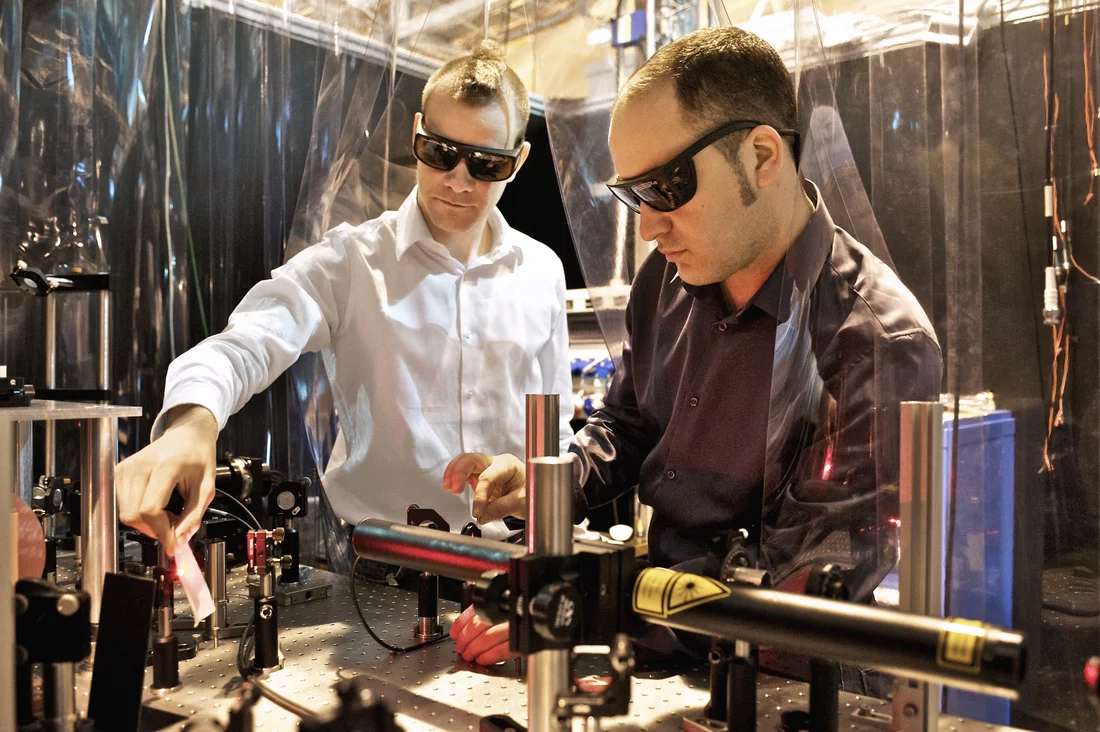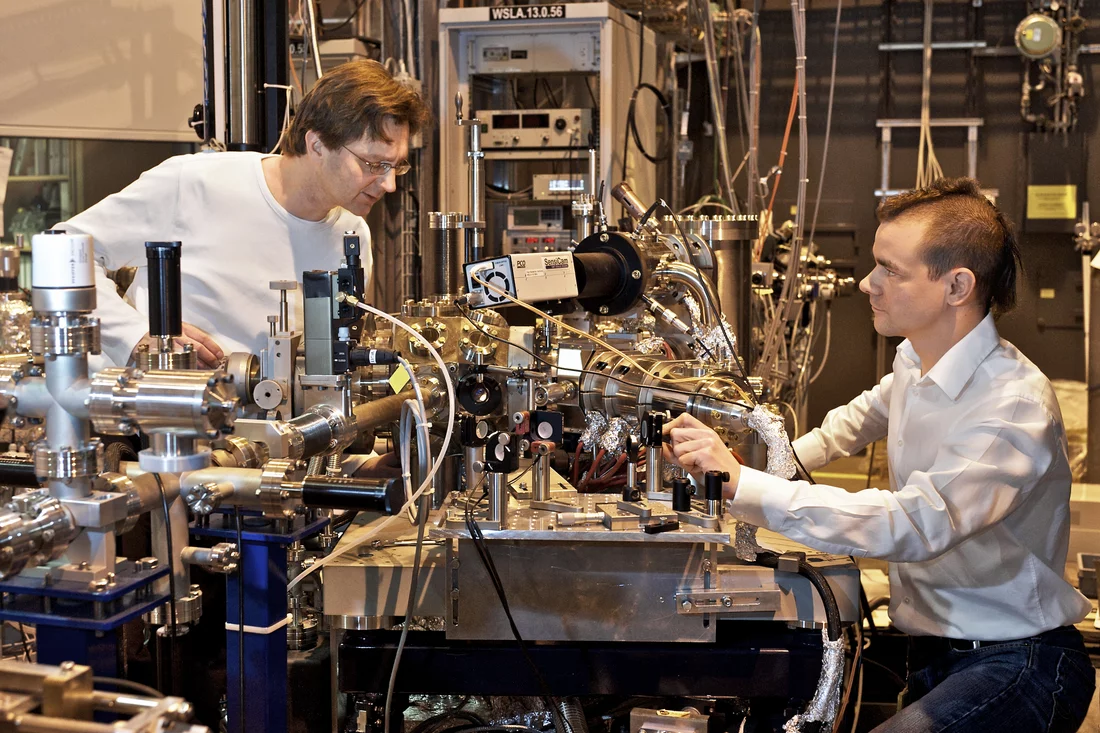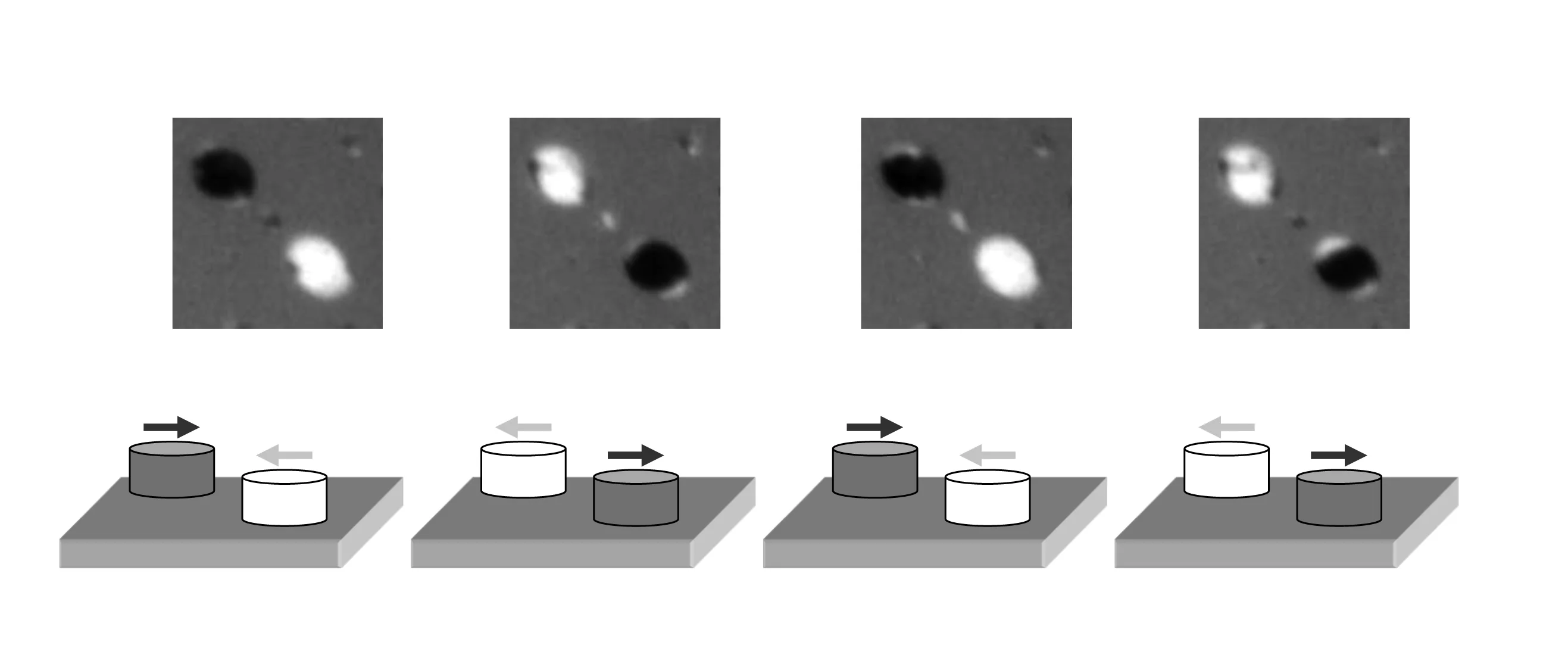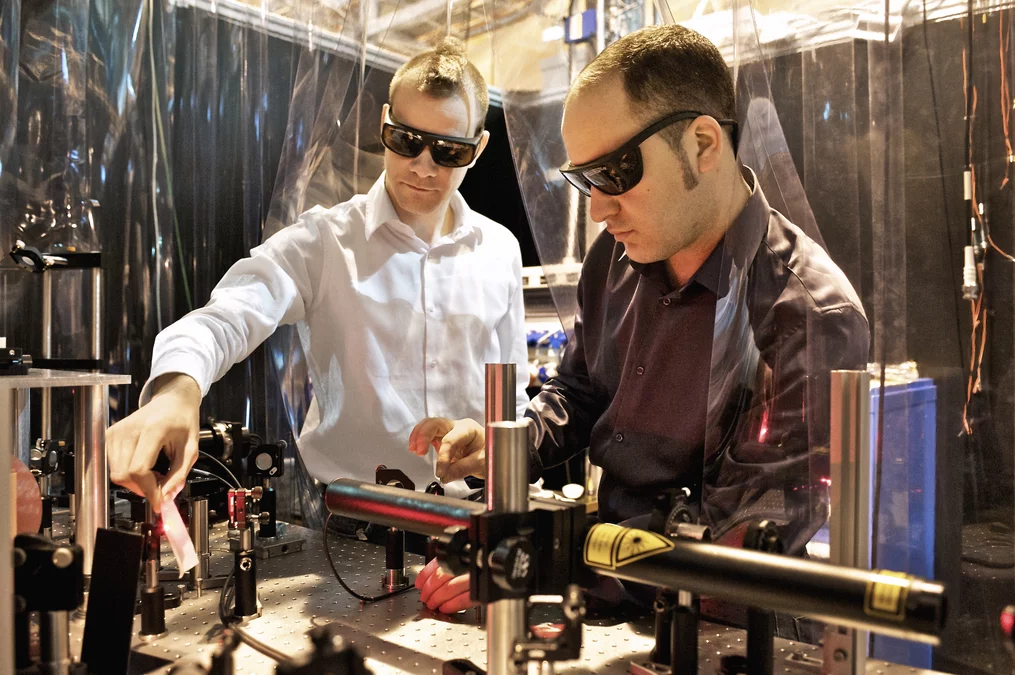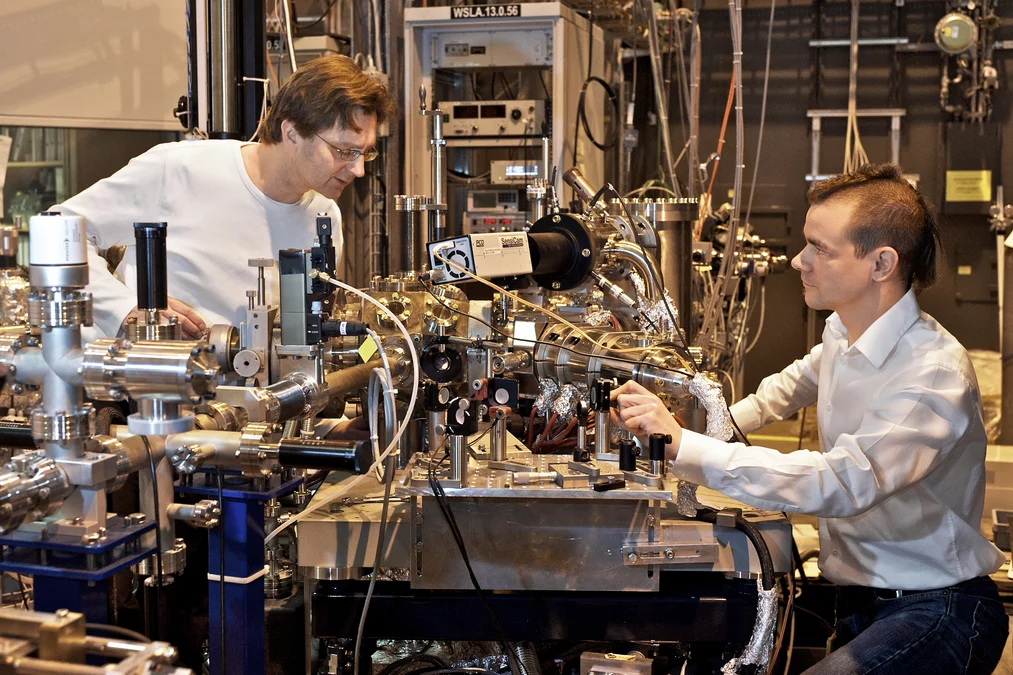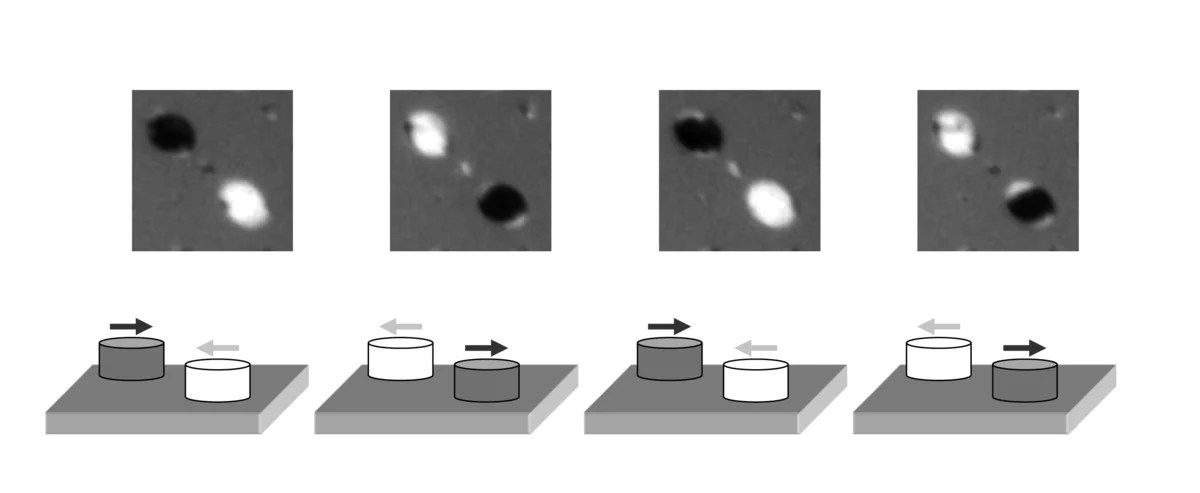Laser pulse changes magnetization of storage media faster and is more energy efficient than external magnetic fields
An international research team has demonstrated a new way to record information on a magnetic medium without the use of a magnetic field. Instead, they found that they could record information using only a heat pulse. They have demonstrated that the positions of both North and the South poles of a magnet can be inverted by an ultrashort very intense heat pulse created by a short laser flash. This heat pulse brings the magnet into a strongly non-equilibrium state (the bit is neither “0” nor “1”) from where it will relax to the “0” or “1”-state within several picoseconds (1 picosecond = 0.000 000 000 001 second). This method of recording might allow one to record Terabytes (1000s of Gigabytes) of information per second being 100s of times faster than present hard drive technology, and consumes much less energy by using heat without the need for a magnetic field. The scientists working on this project come from the United Kingdom, Spain, Switzerland, Ukraine, Russia, Japan and the Netherlands. Using modern lithographic methods and x-ray microscopy, researchers from the Paul Scherrer Institute contributed considerably to this work. The scientists report about their results in the issue of 7 February 2012 of the online journal Nature Communications.
The magic force of magnetism
Everyone who has experienced the attractive and repulsive forces of magnets knows that there is a North and a South pole and that the North pole of one magnet is attracted to the South pole of another and two like poles repel each other. Such magnets, but much smaller than those known from our everyday life are employed in modern magnetic recording technology, e.g. in hard disk drives. This technology uses the polarity of nanometer size magnets to represent bits of information (“0”and “1”). Until now it was believed that in order to record one bit of information, that is invert the poles of a magnet, it was necessary to apply an external magnetic field. For example, modern hard drives record magnetic bits by applying magnetic fields with a strength of up to 1 Tesla (approx. 20,000 times the strength of the Earth’s magnetic field), which allow recording a bit within a few nanoseconds (1 nanosecond = 0.000 000 001 second = 1000 picoseconds). One should emphasize that fast switching of strong magnetic fields is very difficult to achieve.
Storing data faster using heat
By harnessing the power of the much stronger internal forces of magnetic media, the members of an international research team have found a way to record information hundreds of times faster without the need for a magnetic field. Instead of the magnetic field, they used a heat pulse produced by a laser. Every nanomagnet in the material consists of billions of so-called spins, which act like magnets at the atomic scale and are strongly coupled by a so-called exchange interaction. This internal force aligns all the spins of a medium in one direction so the whole medium becomes “magnetic”. For centuries it was believed that heat can only destroy the magnetic order. Now, the international research team has demonstrated that heat can also be a sufficient stimulus for recording information in a magnetic medium. They have discovered that an ultra short (0.1 picoseconds) heat-pulse initially brings a magnetic bit into a strongly non-equilibrium state (neither “0” nor “1”). Subsequently, the internal forces in the magnet represented by the exchange interaction will push the magnet into the opposite one of the equilibrium states i.e. either “0” or “1” and this relaxation will occur on a time-scale of picoseconds. “This method allows the recording of Terabytes (thousands of Gigabytes) of information per second, hundreds of times faster than present hard drive technology. As there is no need for a magnetic field, there is also less energy consumption”, says Thomas Ostler from the University of York who used computer simulations to predict how a laser flash acts on a magnet.
Lithography and x-ray microscopy at the Paul Scherrer Institute
The effect was demonstrated experimentally at the University of Nijmegen using magneto-optical microscopy on thin films and at the Paul Scherrer Institute on micrometer-sized structures, which were produced using a lithographic method at the Laboratory for Micro- and Nanotechnology and then investigated using x-ray microscopy at the Swiss Light Source (SLS). “The synchrotron light produced at the SLS allows us to follow the behaviour of tiny magnets. Thus, we were able to determine the influence of the laser flash on the individual magnets”, says Frithjof Nolting, head of the Magnetism and Microscopy research group at the Paul Scherrer Institute. The researchers are convinced that the method can become the basis for novel more efficient technologies for data storage.
Cooperation partners and supporting agencies
The research team included scientists from University of York; the Instituto de Ciencia de Materiales de Madrid, Spain; Paul Scherrer Institute, Switzerland; College of Science and Technology, Nihon University, Japan; Institute of Magnetism, Kiev, Ukraine; the Ioffe Physical Technical Institute of the Russian Academy of Sciences, Russia; Radboud University Nijmegen, Institute for Molecules and Materials, Netherlands.
The work was partially supported by de Nederlandse Organisatie voor Wetenschappelijk Onderzoek, NanoSci-E+ program, Foundation for Fundamental Research and the Technology Foundation, the Russian Foundation for Basic Research, the European Community’s Seventh Framework Programme, the Spanish MICINN project and the European Research Council under the European Union’s Seventh Framework Programme.
About PSI
The Paul Scherrer Institute develops, builds and operates large, complex research facilities, and makes them available to the national and international research community. The Institute's own key research priorities are in the investigation of matter and material, energy and the environment; and human health. PSI is Switzerland's largest research institution, with 1400 members of staff and an annual budget of approximately 300 million CHF.
Contact
Prof. Dr. Roy Chantrell; Thomas OstlerDepartment of Physics, University of York, York, YO10 5DD UK
Tel: +44 (0)1904 322253, E-Mail: roy.chantrell@york.ac.uk; tao500@york.ac.uk; Web: http://www.york.ac.uk/physics
Dr. Alexey Kimel
Institute of Molecules and Materials (IMM), Radboud University Nijmegen, 6525 AJ Nijmegen, The Netherlands;
Tel : +31 24 3653026; E-Mail: a.kimel@science.ru.nl Web: http://www.ru.nl/ssi/members/alexey_kimel/
Prof. Dr. Frithjof Nolting
Laboratory for Condensed Matter; Research Department Synchrotron Radiation and Nanotechnology, Paul Scherrer Institute, 5232 Villigen PSI, Switzerland;
Tel: +41 56 310 51 11, E-Mail: frithjof.nolting@psi.ch Web: http://www.psi.ch/sls/sim/sim

